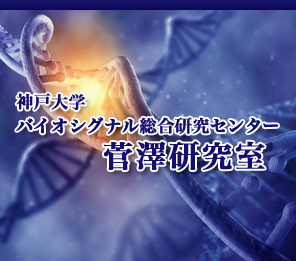講義・セミナー
重点研究チーム「多細胞生物の構築原理と保障機構」学術講演会のお知らせ
以下のセミナーを開催いたします。
| 日 時 : | 2015年 5月27日(水) 午後 5時~ 6時30分 |
| 場 所 : | 神戸大学・理学研究科C棟・509セミナー室 |
| 講 師 : | Prof. Jan H. J. Hoeijmakers (Erasmus Medical Center, Rotterdam, The Netherlands) |
| 演 題 : | The impact of DNA damage on neurodegeneration and the effect of nutritional interventions |
講演要旨
Most premature aging syndromes are associated with Inherited defects in DNA repair systems, disclosing a strong link between genome maintenance and aging. Deficiencies in transcription-coupled repair with or without additional global genome nucleotide excision repair defects cause severe neurodevelopmental deficits and segmental progeria as in Cockayne syndrome and trichothiodystrophy. Corresponding single and double mouse mutants reveal that the severity of specific repair defects strictly correlates with the acceleration of selective premature aging features (including prominent neurodegeneration), whereas the type of DNA repair defect determines the repertoire of progeroid symptoms. Microarray, functional and physiological studies revealed that persistent DNA damage down-regulates the IGF1/GH-, lacto- and thyrotropic hormonal axes and upregulates anti-oxidant defenses, favouring maintenance at the expense of growth. This ‘survival response’ resembles the one elicited by dietary restriction (DR), which promotes longevity and links accumulation of DNA damage and IGF1 control of life span. Nevertheless, subjecting these progeroid, dwarf mutants to actual DR resulted in the largest lifespan increase recorded in mammals. Thirty percent DR tripled median and maximal remaining lifespan, and drastically retarded numerous aspects of accelerated aging. Neurodegeneration benefitted most: DR animals retained 50% more neurons and e.g. full motoric function. Expression profile analysis and conditional DNA repair models targeting aging to selected organs revealed striking parallels with Alzheimer’s disease (AD), consistent with the notion that aging is the most important risk factor for AD. Expression profiles of accelerated aging mutants also showed preferential extinction of expression of long genes, consistent with genome-wide accumulation of stochastic lesions impeding transcription. DR largely prevented this decline of transcriptional output, indicating that DR prolongs genome function by reducing metabolically-derived DNA damage. Our findings strengthen the link between DNA damage and aging, establish Ercc1∆/- mice as a powerful model for identifying anti-aging interventions, reveal untapped potential for reducing endogenous damage, provide new venues for understanding the molecular mechanism of DR, and suggest a counterintuitive DR-like therapy for human progeroid genome instability syndromes and DR-like interventions for preventing neurodegenerative diseases.

